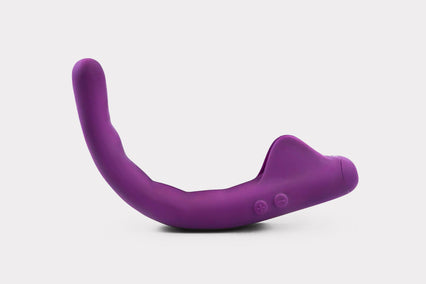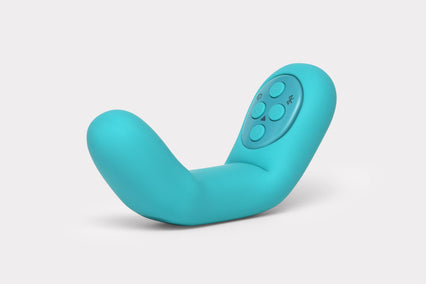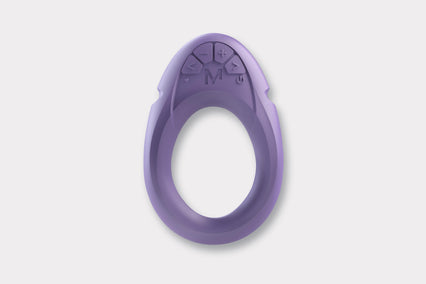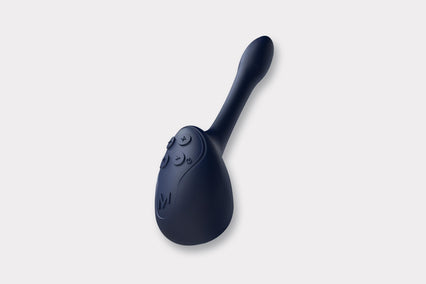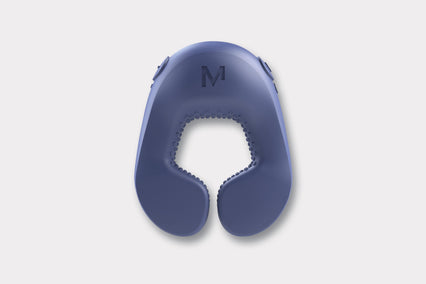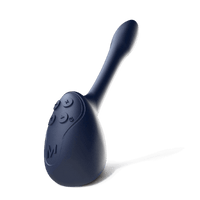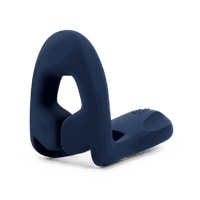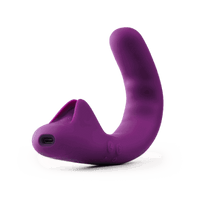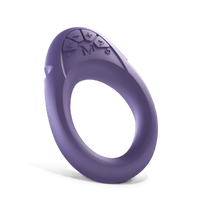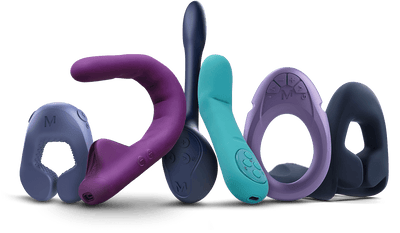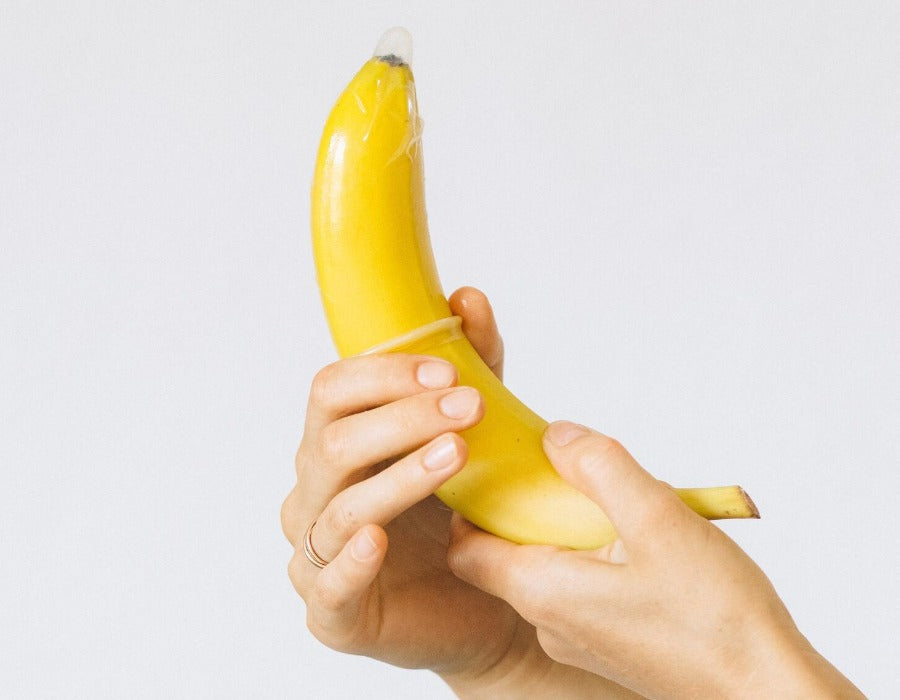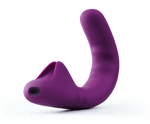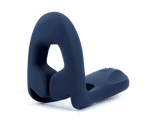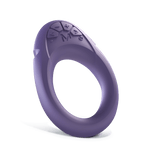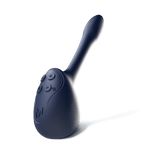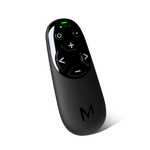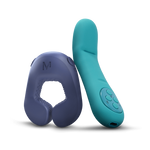Childbirth, often hailed as one of the most transformative experiences in a woman's life, brings a journey filled with a myriad of emotions, ranging from joy and delight to anxiety and exhaustion. As the body undergoes profound changes to accommodate and nurture a new life, many mothers face physical challenges in the aftermath.
One notable challenge, which can sometimes be overshadowed by the joy of welcoming a newborn yet is deeply felt by many, is postpartum pelvic pain. This specific type of discomfort, distinct from the usual pains associated with recovery, can have a lingering effect, affecting a mother's ability to move, her emotional state, and her general quality of life. But what exactly triggers this distress, and why does it emerge as a common concern among postpartum women?
In this article, we'll delve into the nature of postpartum pelvic pain and explore potential treatments for this common condition.
What Is Postpartum Pelvic Pain?
Postpartum pelvic pain is a specific discomfort experienced in the pelvic area after giving birth. This region, which lies between the belly button and the thighs, is a complex network of bones, muscles, and connective tissues. After childbirth, many women report feelings ranging from a consistent dull ache to sharp, sporadic jolts in this area. While a certain degree of soreness is expected following the rigors of childbirth, persistent or intense pain might indicate deeper issues.
The origin can often be traced back to the body's adaptations during pregnancy. As the fetus grows, the pelvic bones and ligaments expand, hormone levels shift, and the weight supported by the pelvic region increases. These necessary changes, when combined with the physical aftermath of either a vaginal delivery or a C-section, can lead to the discomfort labeled as postpartum pelvic pain. Beyond its physical implications, it can also have emotional repercussions, potentially affecting a mother's daily activities and, in some cases, her bond with her newborn.
What Causes Pelvic Pain After Delivery?
Postpartum pelvic pain can be attributed to a variety of factors, each stemming from the physiological and hormonal changes that occur during pregnancy and childbirth:
- Physical Trauma: Childbirth, especially prolonged labor or a difficult delivery, can cause trauma to the pelvic region. This includes bruising, stretching, or tearing of the muscles and ligaments.
- Hormonal Fluctuations: The hormone relaxin, which increases during pregnancy, causes the ligaments in the pelvic area to become more flexible, preparing the body for childbirth. However, this increased flexibility can sometimes lead to instability post-delivery, causing discomfort.
- C-Section Recovery: A C-section involves making incisions through the abdominal and uterine walls. The recovery from this surgical procedure can cause pain in the pelvic and abdominal areas.
- Pelvic Floor Dysfunction: The pelvic floor muscles support the uterus, bladder, and bowel. During childbirth, these muscles can become weakened or injured, leading to complications like urinary incontinence.
- Infections: Sometimes, infections in the uterus, fallopian tubes, or other reproductive organs can cause pelvic pain post-delivery.
- Episiotomy or Perineal Tears: An episiotomy is a surgical cut made in the perineum to enlarge the vaginal opening during childbirth. If this area doesn't heal properly, it can cause persistent aches.
Symptoms of Pelvic Pain Postpartum
The pelvic region, intricate in its design, can manifest discomfort in various ways. By identifying the specific locations and nature of this pain, women can better navigate their postpartum experiences and seek the most effective interventions.
1. Location of Pain
Here are the most common areas:
- Vaginal Opening: Often the epicenter of immediate post-childbirth discomfort, the vaginal opening can become particularly sensitive, especially if there has been tearing or an episiotomy. Pain here can be sharp and stinging, especially during activities like urination. It's also the area most susceptible to external irritations, such as from sanitary products or clothing.
- Lower Abdomen: This region houses the uterus, which undergoes a series of contractions as it returns to its pre-pregnancy size post-delivery. These contractions, or "afterpains," can evoke cramping sensations reminiscent of menstrual pains. Additionally, the lower abdomen can be sensitive to touch, especially if there's been a C-section incision.
- Hips: Having borne the weight and strain of pregnancy, the hips can experience a range of issues postpartum. Consequently, the ligaments that had loosened to facilitate childbirth start to tighten again, potentially causing sensations of imbalance or even a sense of "instability" in the hip joints. This area can also be sensitive to the touch, especially along the iliac crest or the hip bone.
- Pelvic Girdle: This bone structure, comprising the pubis, ilium, and ischium, can emit a deep, achy pain. The feeling can be especially pronounced after prolonged physical activity or standing. The sacroiliac joints, where the spine meets the pelvis, can also be sources of irritation, especially during transitions like rising from a seated position or shifting while in bed.
2. Nature of Pain
Pelvic pain can manifest in various forms. Its nature can be a telling sign of its origin, duration, and potential underlying causes:
|
Nature of Pain |
Description |
Likely Origin |
Potential Underlying Causes |
|
Constant Pain |
Relentless, persists day and night. Doesn't wane with rest or position changes. |
Ongoing issue |
Infection, inflammation, chronic conditions |
|
Intermittent Pain |
Sporadic, occurs at certain times or during specific activities. |
Varies |
Menstrual cycle, specific activities |
|
Sharp Pain |
Sudden, jolting sensation like a quick stab or pinch. |
Nerve irritation, healing wound |
Cystitis, bladder spasms |
|
Dull Pain |
Generalized, lingering ache that is harder to pinpoint. |
Musculoskeletal |
Muscle fatigue, strain, post-childbirth |
|
Localised Pain |
Concentrated in one area, easier to identify the potential cause. |
Specific organ or area |
C-section scar, specific injury |
|
Spread Out Pain |
Diffuse discomfort spanning a broader area, challenging to pinpoint its origin. |
Varies |
Multiple potential origins |
Treatments for Postpartum Pelvic Pain
Motherhood comes with its set of challenges, one of which can be postpartum pelvic pain. The good news is that there are effective treatments available. With the right care and interventions, this discomfort can be managed, allowing mothers to navigate the postpartum phase with greater ease.
1. Sexual Wellness Devices

When it comes to postpartum recovery and pelvic health, compromise is not an option. Enter Crescendo 2 – a clinically proven, game-changing device specifically engineered to redefine your sexual wellness journey.
Unmatched Adaptability
As the world's inaugural bendable vibrating device, Crescendo 2 offers an unprecedented level of adaptability. It fits seamlessly with every body type, delivering medical-grade vibrations precisely where you need them most.
Customization Beyond Imagination
With a staggering six motors and 16 intensity settings, this device makes personalization its second nature. Its intuitive smart app places the control literally at your fingertips, allowing you to adjust each motor's pattern and intensity. The result? An unparalleled, customized experience, every single time.
A Commitment to Quality and Safety
Constructed from water-resistant medical silicone and equipped with USB rechargeable functionality, Crescendo 2 is designed to last. It's not just a device; it's an investment in your well-being, promising both safety and durability.
Flawless, Seamless Control
Choose your avenue of control. Whether it's through the state-of-the-art smart app or an independent controller, this wellness tool offers an uninterrupted, deeply immersive experience. Say goodbye to distractions and hello to pure, focused pleasure and healing.
Crescendo 2 isn't just a sexual wellness device; it's a revolution in holistic pelvic health. Empowering you to take control of your own body, it combines cutting-edge technology with unparalleled personalization, ensuring that your journey towards improved muscle tone, reduced pain is nothing short of extraordinary.
With Crescendo 2, your wellness is non-negotiable. Experience it today.
2. Physical Therapy

Physical therapy is a foundational component of postpartum recovery. Under the guidance of a trained therapist, tailored exercises and specific movements can significantly alleviate pelvic pain. The emphasis in physical therapy isn't solely on immediate relief; it's also about fortifying and enhancing flexibility in the pelvic region, which promises lasting benefits.
A standout benefit of physical therapy is its bespoke approach. Every session is tailored to cater to an individual's unique needs, pinpointing and addressing specific problem zones or areas of weakness. Techniques, such as pelvic floor muscle training, play a pivotal role in reestablishing stability and equilibrium in the pelvic area.
Furthermore, physical therapy provides a confidential environment for women to voice their concerns, understand the transformations their bodies have undergone, and acquire knowledge on preventive strategies against potential future issues. Through regular sessions, a significant number of women report enhanced mobility, reduced discomfort, and an uplifted quality of life. As women navigate the postpartum journey, physical therapy stands as a reliable companion, steering them towards an empowered and comfortable future.
3. Relaxation Techniques

In the quest for postpartum recovery, the mind plays an equally vital role as the body. Relaxation techniques, such as deep breathing exercises, guided imagery, and progressive muscle relaxation, offer a non-invasive approach to managing and reducing pelvic pain. These methods focus on calming the mind, reducing stress, and promoting a sense of well-being.
For instance, deep breathing encourages full oxygen exchange, which can help in relaxing the entire body and easing muscle tension. Additionally, guided imagery transports individuals to a peaceful place or situation, diverting their attention away from distress. Moreover, progressive muscle relaxation involves tensing and then relaxing each muscle group, helping in recognizing and releasing muscle tension.
Incorporating these techniques into daily routines can not only provide immediate relief from discomfort but also equip women with tools to manage potential stressors in the future. As holistic solutions, these methods foster a balanced path to postpartum recovery.
4. Body Mechanics

The way we move, sit, stand, and even sleep can have profound effects on our postpartum recovery, especially when dealing with pelvic pain. Proper body mechanics involves using correct postures and movements to prevent injury and promote efficient muscle use, is crucial for new mothers navigating the demands of caring for a newborn.
Additionally, by understanding and implementing proper lifting techniques, such as bending at the knees instead of the waist, mothers can reduce strain on the pelvic region. Similarly, maintaining a neutral spine while sitting or standing can alleviate undue pressure on the pelvis.
Moreover, ergonomic aids, like supportive cushions or chairs, can be beneficial in ensuring optimal posture, especially during feeding or while holding the baby for extended periods. Simple adjustments, like evenly distributing weight while standing or using a footrest, can make a significant difference.
5. Medication and Topical Treatments

While non-invasive methods are often the first line of defense, there are instances where medication or topical treatments become necessary to manage postpartum pelvic pain. Under the guidance of a healthcare professional, certain over-the-counter or prescribed medications can offer relief from inflammation and irritation.
Topical treatments, such as cooling gels or warming ointments, can provide localized relief by soothing the affected area. These are especially beneficial for external discomforts around the perineal region or C-section scars.
For those experiencing more intense or persistent discomfort, doctors might recommend specific medication or anti-inflammatory drugs. It's crucial, however, to ensure that any medication taken is safe, especially if breastfeeding.
Always consult with a healthcare provider before starting any medication. Whether it's your general practitioner, a gynecologist, or a specialized physical therapist, professional guidance ensures you're on the right path and minimizes risks.
Conclusion
Navigating the postpartum period is a profound journey, one that intertwines the complexities of physical recovery with the emotional tapestry of motherhood. As we've explored the multifaceted realm of postpartum pelvic pain, it becomes evident that a myriad of solutions, both traditional and contemporary, stand ready to assist.
The path to recovery, while unique for every individual, is bolstered by knowledge, understanding, and the advancements of modern medicine. It's essential to remain informed, seek guidance when needed, and prioritize one's well-being. As we move forward, let us approach postpartum pelvic pain challenges with resilience, informed choices, and the assurance that with the right resources, recovery is not just possible but also attainable.

